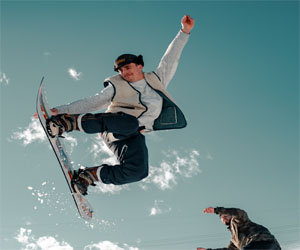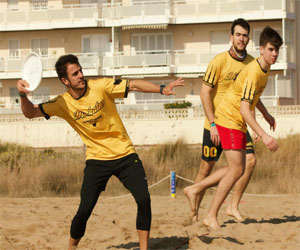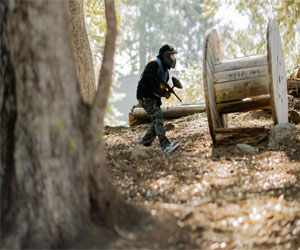


Understanding The Risks Of Sports-Related Injuries

Engaging in sports and physical activities offers a plethora of physical, mental, and social benefits, from improved fitness and mental well-being to enhanced social interactions. However, it's important to recognize that the exhilaration of these activities comes with inherent risks, and understanding these risks is a crucial aspect of responsible participation in sports. In this article, we will explore the various risks associated with sports-related injuries and the importance of being informed.
1. Acute Trauma: One of the most immediate risks in sports is acute trauma, which includes injuries such as fractures, dislocations, and concussions. These injuries often occur as a result of sudden, forceful impact and can have severe consequences if not promptly addressed.
2. Overuse Injuries: Overuse injuries are another common risk in sports. These injuries develop gradually from repetitive stress on a particular area of the body. Overuse injuries can affect tendons, muscles, and joints, leading to conditions like tendinitis, stress fractures, and muscle strains.
3. Sprains And Strains: Sprains and strains are frequent sports injuries. Sprains involve the stretching or tearing of ligaments, while strains affect muscles or tendons. These injuries often result from improper technique, inadequate warm-up, or overexertion.
4. Dislocations: Dislocations occur when a bone is forcibly pushed out of its joint. Sports that involve sudden impacts or falls, such as football or basketball, carry a higher risk of dislocation injuries.
5. Stress Fractures: Stress fractures are hairline cracks in bones that typically result from repetitive, high-impact activities. Runners, gymnasts, and dancers are particularly susceptible to these injuries.
6. Concussions: Concussions are a type of traumatic brain injury often caused by head impacts, common in contact sports like football and soccer. Proper diagnosis and management of concussions are critical to avoid long-term consequences.
7. Contusions And Bruises: Contusions, commonly known as bruises, are injuries that result from blunt force trauma. While not usually severe, they can be painful and temporarily limit performance.
8. Sprained Ankles: Ankle sprains are a prevalent sports injury, typically occurring when the foot rolls or twists unnaturally. They can vary in severity from mild to severe and may require extended recovery periods.
9. Cuts And Abrasions: Sports that involve contact with hard surfaces or objects may lead to cuts and abrasions. These injuries can range from minor scrapes to more severe lacerations.
10. Heat-Related Illnesses: Participating in sports in extreme heat can lead to heat-related illnesses like heat exhaustion and heatstroke. These conditions can be life-threatening if not promptly treated.
Understanding these risks is vital for athletes, coaches, and parents. It highlights the importance of proper training, warm-up routines, protective gear, and adherence to safety guidelines. Athletes must be aware of their bodies and take appropriate precautions to minimize the risks associated with their chosen sport.
Moreover, prompt and effective treatment and rehabilitation are essential in the event of an injury to ensure a full recovery. Seeking professional medical advice, physical therapy, and adhering to a structured recovery plan is crucial for athletes who suffer injuries.
Participating in sports and physical activities is a rewarding endeavor, but it is not without its risks. Understanding these risks and taking proactive measures to prevent injuries is essential for a safe and fulfilling sporting experience. By staying informed, prioritizing safety, and seeking proper treatment when needed, athletes can reduce the likelihood and impact of sports-related injuries and continue to enjoy the many benefits of an active lifestyle.


A Tactical Guide To Victory
 The Importance Of Outwitting Opponents
The Importance Of Outwitting Opponents
Outsmarting your opponents in paintball is a fundamental skill that can turn the tide of the game in your favor. While accuracy and precision are crucial, intelligence and strategy can be equally, if not more, important. Outwitting opponents can help you secure eliminations, capture objectives, and ultimately win the game.
Key Strategies For Outsmarting Opponents In Paintball
Predicting Movements: Pay attention to your opponents' movements and patterns. By predicting where they are likely to go next, you can set up ambushes or position yourself advantageously.
Flanking Maneuvers: Outflanking your opponents is a classic tactic that can catch them off guard. By taking a wide route to the side or rear, you can create crossfire situations and disrupt their plans.
Communication: Effective communication with your team is essential for outwitting opponents. Share information about enemy positions, plans, and actions. Coordinate your efforts to maximize your advantage.
Deception: Use deception to your advantage. Mislead opponents with false information, create diversions, or employ other tactics to make them act in ways that benefit your team.
A Fascinating Window Into Avian Worlds
 Understanding Species Diversity: One of the most significant advantages of observing bird behavior is gaining a deeper understanding of the remarkable diversity of bird species. Each type of bird has its own unique behaviors and characteristics. Whether it's the elaborate courtship displays of the male peacock, the synchronized aerial acrobatics of starlings, or the cooperative hunting tactics of Harris's hawks, every species has its distinct set of behaviors.
Understanding Species Diversity: One of the most significant advantages of observing bird behavior is gaining a deeper understanding of the remarkable diversity of bird species. Each type of bird has its own unique behaviors and characteristics. Whether it's the elaborate courtship displays of the male peacock, the synchronized aerial acrobatics of starlings, or the cooperative hunting tactics of Harris's hawks, every species has its distinct set of behaviors.
Insights Into Ecology: Bird behavior observation can provide valuable insights into the ecological niches that different bird species occupy. By observing their feeding habits, nesting preferences, and interactions with other species, we can better understand the role each bird plays in the ecosystem. For instance, seed-eating birds like finches are essential for dispersing plant seeds, contributing to forest regeneration.
Breeding And Reproduction: The study of bird behavior is essential for understanding the intricate world of avian reproduction. From the construction of nests to the feeding of chicks, each species exhibits unique parenting behaviors. Observing these behaviors allows ornithologists to monitor the health of bird populations and make informed conservation decisions.
Communication: Birds are well-known for their complex and diverse forms of communication. Through vocalizations, body language, and displays, they convey information about territory, courtship, and danger. By observing these behaviors, we can decode the language of birds, gaining insights into their social structures and hierarchies.
Advanced Techniques For Snowboarders
 2. Riding Switch: Riding switch, also known as riding fakie, is the art of snowboarding in the opposite direction from your regular stance. To become an advanced snowboarder, you should be comfortable riding switch. Practice riding with your non-dominant foot leading and work on your balance and control to improve your overall snowboarding skills.
2. Riding Switch: Riding switch, also known as riding fakie, is the art of snowboarding in the opposite direction from your regular stance. To become an advanced snowboarder, you should be comfortable riding switch. Practice riding with your non-dominant foot leading and work on your balance and control to improve your overall snowboarding skills.
3. Terrain Park Tricks: If you're aiming to take your snowboarding to the next level, consider venturing into terrain parks. Learn tricks like ollies, spins, grabs, and board slides. Terrain parks offer an exciting playground for advanced snowboarders, allowing you to express your creativity and style while navigating jumps, rails, and other features.
4. Off-Piste Riding: Off-piste or backcountry snowboarding takes you away from the groomed slopes and into the untouched, wild terrain. Before attempting off-piste riding, it's crucial to acquire the necessary avalanche safety skills and equipment. This advanced snowboarding technique opens up a world of exploration and adventure for those who crave more than just groomed runs.
5. Navigating Steep Terrain: Advanced riders can handle steeper slopes with confidence and control. To master steep terrain, work on your balance, edge control, and body positioning. Learn to initiate quick turns and control your speed, making descents on challenging slopes feel exhilarating rather than intimidating.
6. Powder Riding: Powder snow is a snowboarder's dream. To excel in powder riding, keep your weight centered, use a wider stance, and make fluid, surf-like movements.






A Beginner's Guide
 1. The Objective: The primary goal in Ultimate Frisbee is to score points by catching the disc in the opposing team's end zone. Each team has seven players on the field, and the game is typically played until one team reaches a predetermined number of points.
1. The Objective: The primary goal in Ultimate Frisbee is to score points by catching the disc in the opposing team's end zone. Each team has seven players on the field, and the game is typically played until one team reaches a predetermined number of points.
2. Starting Play: A game of Ultimate begins with a "pull," which is essentially a throw-off. One team pulls the disc to the other to initiate play. The receiving team then attempts to advance the disc up the field through passing and catch the disc in the opposing team's end zone.
3. Movement And Passing: Players move the disc down the field through a series of passes. When a player has possession of the disc, they cannot move, only pivot on one foot. They must establish a pivot foot before passing the disc to a teammate. Passing is done by throwing the disc to a teammate, who aims to catch it. Passing techniques include forehand, backhand, and hammer throws.
4. Turnovers And Possession: If a pass is dropped, intercepted, or goes out of bounds, possession of the disc is turned over to the opposing team. The game features a strong emphasis on turnover-free play, and turnovers are a part of the strategy and excitement in Ultimate.
5. Scoring: Points are scored when a player catches the disc in the opposing team's end zone, similar to scoring a touchdown in football.
Keys To Victory On The Battlefield
 2. Cover And Suppression
2. Cover And Suppression
Suppression and providing cover fire are vital elements in winning paintball games. By keeping your opponents' heads down and restricting their movements, you can create opportunities for your team to advance, secure objectives, or take advantageous positions. Supporting your teammates with covering fire allows them to maneuver more effectively.
3. Flanking Maneuvers
Outflanking your opponents is a classic and effective paintball strategy. By taking a wide route to the side or rear, you can catch your opponents in a crossfire and disrupt their plans. Flanking maneuvers can be especially powerful when combined with effective communication and coordination.
4. Defense And Control
In certain scenarios, adopting a defensive approach can be a winning strategy. Defend critical areas, objectives, or positions to maintain control and prevent the opposing team from advancing. Defensive play requires patience, excellent marksmanship, and teamwork to hold your ground.
5. Adaptability And Flexibility
Paintball games can be unpredictable, and the ability to adapt and be flexible in your strategies is a key element in achieving victory. Stay open to changing tactics as the game evolves. What worked in one round may not work in the next, so being willing to adjust is crucial.
Riding The Waves Of Adventure
 At its core, ocean surfing is a dynamic dance between man and the ocean's mighty waves. It's an awe-inspiring display of athleticism, courage, and connection with nature. The thrills of ocean surfing are many, and they are what draw surfers from all corners of the globe to seek out the perfect wave.
At its core, ocean surfing is a dynamic dance between man and the ocean's mighty waves. It's an awe-inspiring display of athleticism, courage, and connection with nature. The thrills of ocean surfing are many, and they are what draw surfers from all corners of the globe to seek out the perfect wave.
One of the most exhilarating aspects of ocean surfing is the pure force of the waves. As surfers paddle out to meet the ocean, they are met with the raw power of the sea. Waves can rise to towering heights, their roars drowning out everything else. The surfer must harness this energy and use it to propel themselves forward, catching a wave at just the right moment. It's a delicate balance between challenge and exhilaration.
The thrill of riding a wave, once caught, is indescribable. It's a rush that surges through every cell of the surfer's body. The moment they pop up onto their board and begin to ride the face of the wave, a sense of freedom and ecstasy takes over. It's a unique feeling of weightlessness and connection with the ocean, a moment where time seems to stand still.
Each wave is different, offering its own unique set of thrills. Some waves are fast and powerful, requiring surfers to make split-second decisions. Others are long and mellow, allowing for a more leisurely ride. Then, there are the barrel waves, where the surfer is completely enclosed by the curling wave - a heart-pounding experience akin to being in a water tunnel.